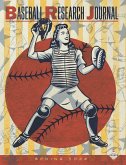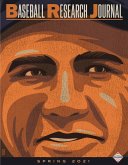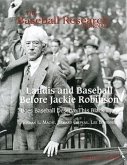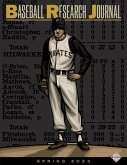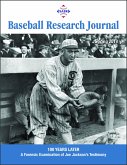The Spring 2024 issue of the Baseball Research Journal features fourteen articles covering topics ranging from statistical analysis to nineteenth century baseball from researchers including Alan Cohen, Herm Krabbenhoft, and Woody Eckard, as well as profiles of this year's Henry Chadwick Award winners: Sarah Langs, Larry Gerlach, and Leslie Heaphy. Charlie Pavitt brings us the first of two articles analyzing plummeting batting averages in the major leagues (more than defensive shifts are to blame) and Peter Dreier takes a comprehensive look at how the changes in demographics of the United States are reflected by the representation of Jewish players in major league baseball. ON THE COVER: Rickwood Field in Birmingham, Alabama, is the oldest professional baseball park in the United States. This summer it will add another chapter to its rich history when it hosts the San Francisco Giants and St. Louis Cardinals in an MLB regular-season game. In this issue, John Shorey and Kevin Warneke examine how a game played 100 years ago at Rickwood between the Black Barons and the Cuban Stars was the first major-league game played at the historic ballpark. ALSO IN THIS ISSUE: “Mary Dobkin: Baltimore’s Grande Dame of Baseball” by David Krell Mary Dobkin learned English through radio broadcasts and newspapers, which is a familiar tale for twentieth-century immigrants. Baseball was both an outlet and a salve, as she suffered through many operations and medical treatments. “Then one summer she got to attend therapy camp,” reads a 1979 Los Angeles Times profile. “From her wheelchair, she was taught to catch and hit a baseball. It was magic. Quiet, reclusive Mary Dobkin returned to the hospital a new person, ignited by direct experience with baseball.” She would go on to create and run baseball teams for underprivileged kids for decades, and her life story would become a movie starring Jean Stapleton. “The Ill-Fated Dodgers and Indians World Baseball Tour of 1952” by Matthew Jacob Abe Saperstein is best known as the founder of the Harlem Globetrotters basketball team, but he also was deeply involved in many aspects of professional baseball. With the US State Department’s cooperation, Saperstein drafted plans for an international tour by big-league baseball teams in 1952—a trip that one sports editor called “the most ambitious barnstorming tour in the history of baseball.” Saperstein’s plan called for the Brooklyn Dodgers and Cleveland Indians to play a series of 22 games over a 60-day schedule, beginning in Hawaii and then continuing to Japan, India, Egypt, Australia, and North Africa. The Dodgers and Indians had been the first racially integrated teams in their respective leagues, and Secretary of State Dean Acheson referred to this dynamic as a key reason why the government would back the proposed tour. Because both teams had players “of every nationality, creed, and color,” he wrote, the trip would attest to America’s democratic values. “‘Death to Flying Things’: The Life and Times of a Spurious Nickname” by Richard Hershberger “Death to Flying Things” is one of the all-time great baseball nicknames, routinely included in lists of such things. Indeed, it serves double duty, attributed to two players: Robert Ferguson and John Chapman. Both men played for the Atlantic Club of Brooklyn in the 1860s, but, sadly, neither Ferguson nor Chapman was called “Death to Flying Things” during their playing careers, or for many years after. The nickname is entirely spurious. This article will attempt to explain where the supposed nickname came from in the first place, and how it got assigned to two different persons.


